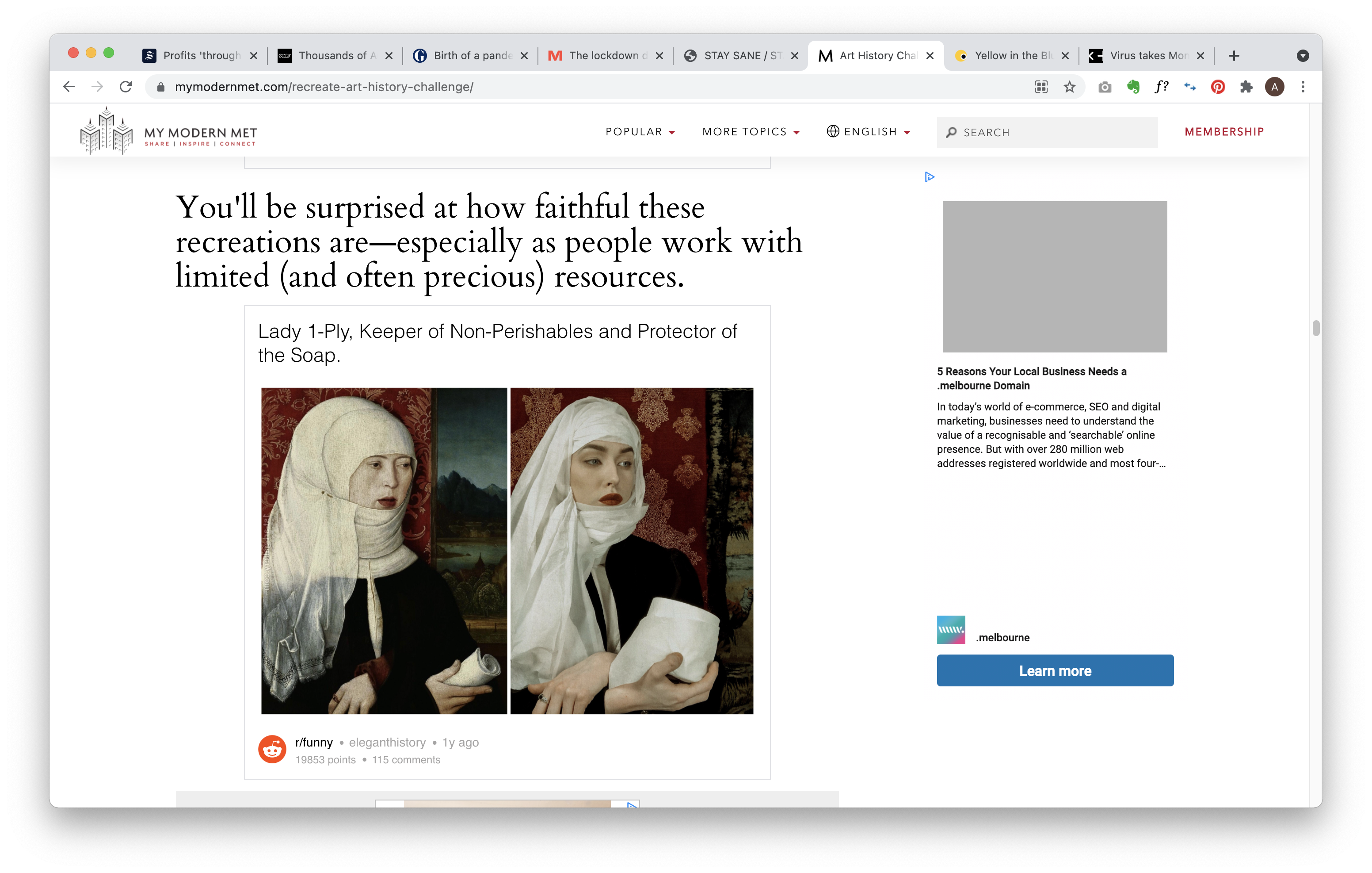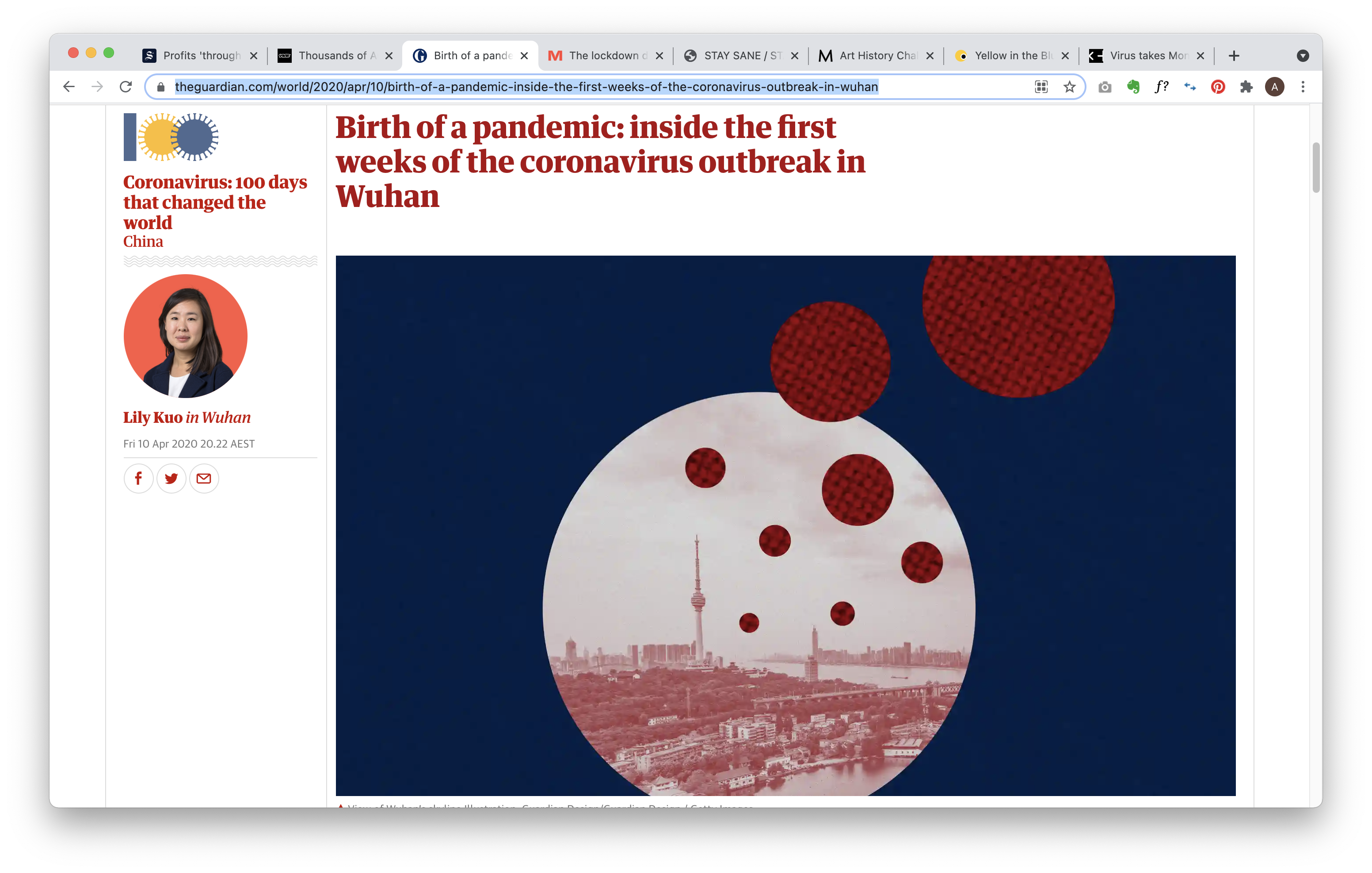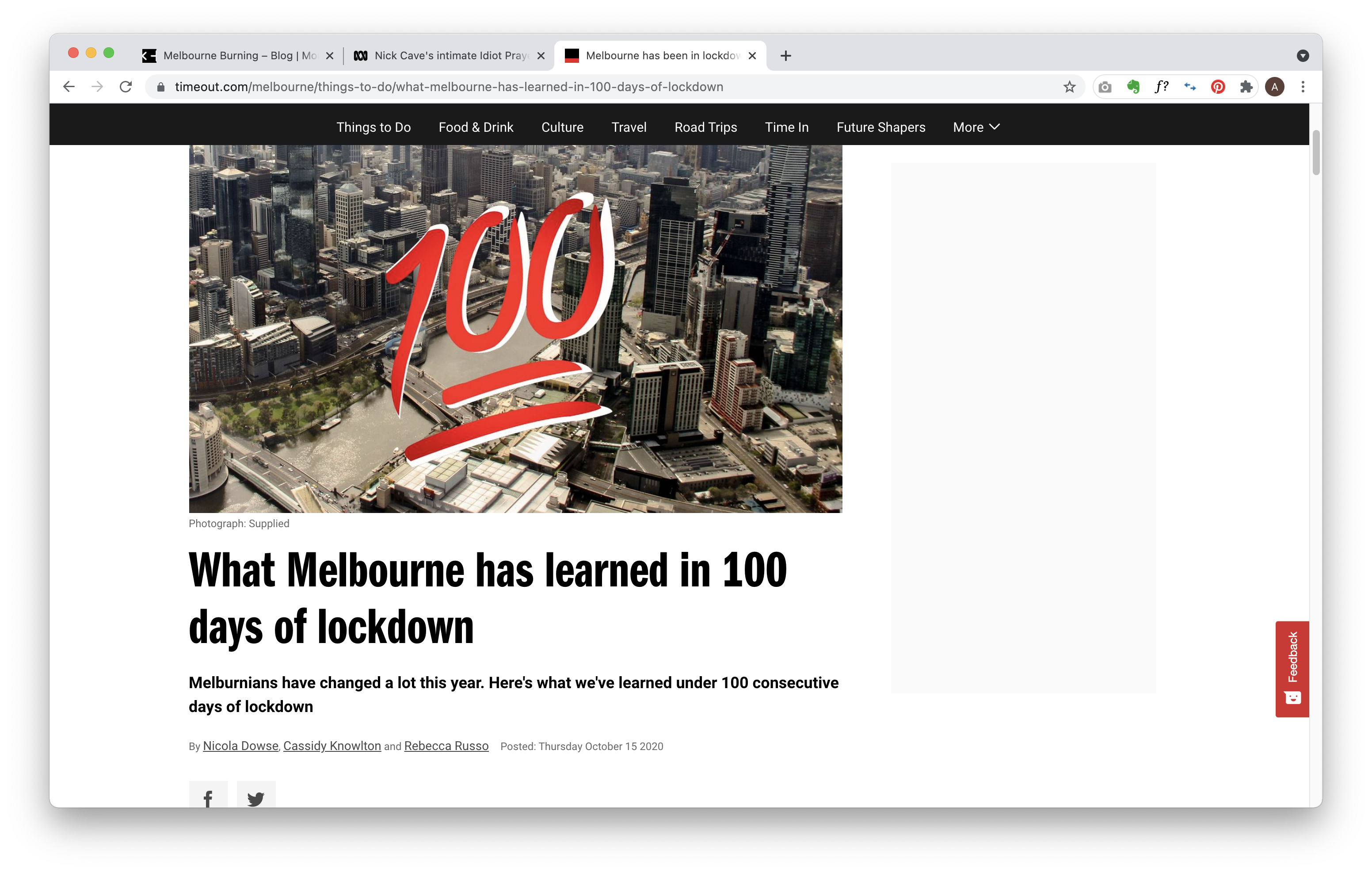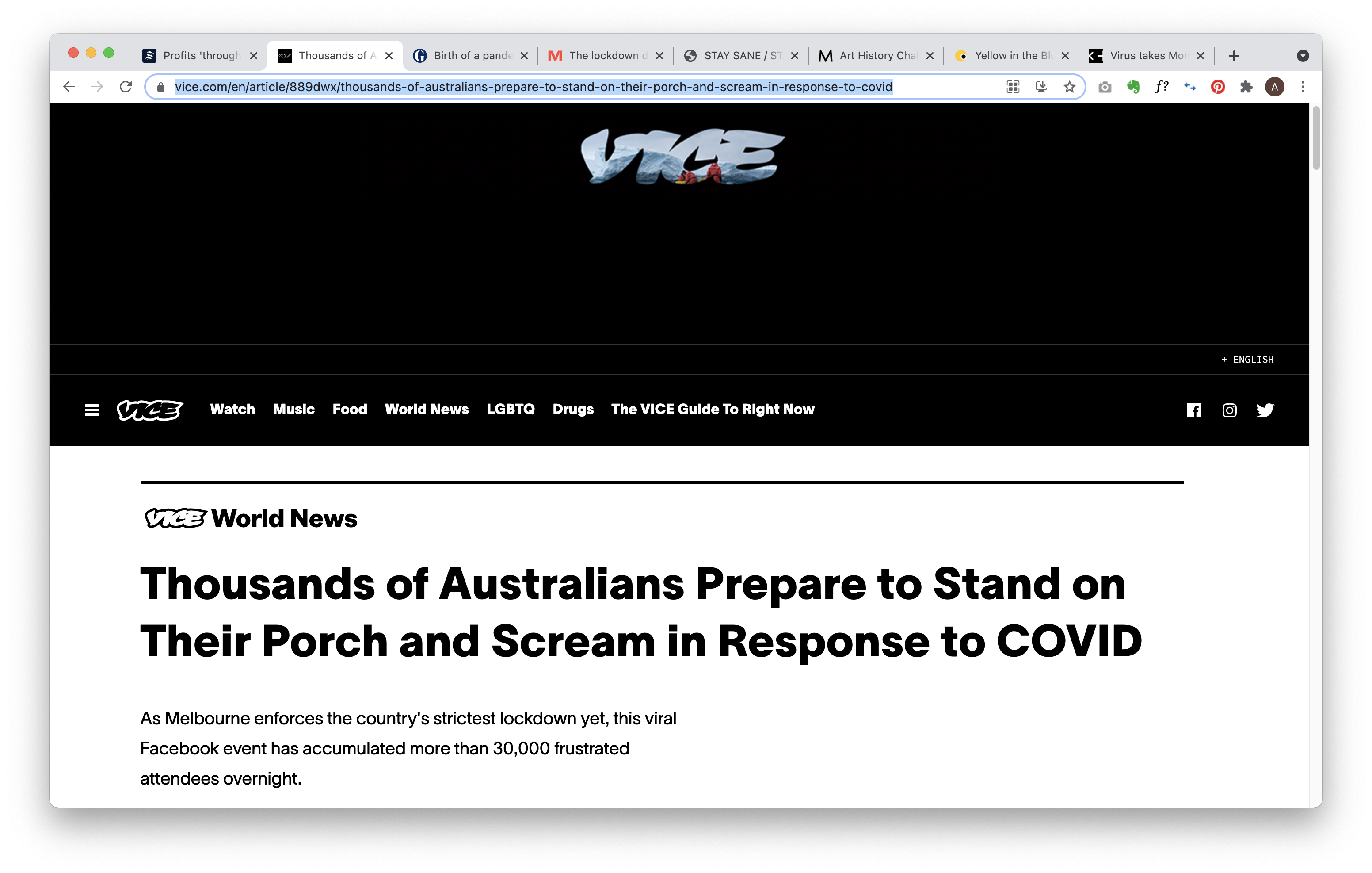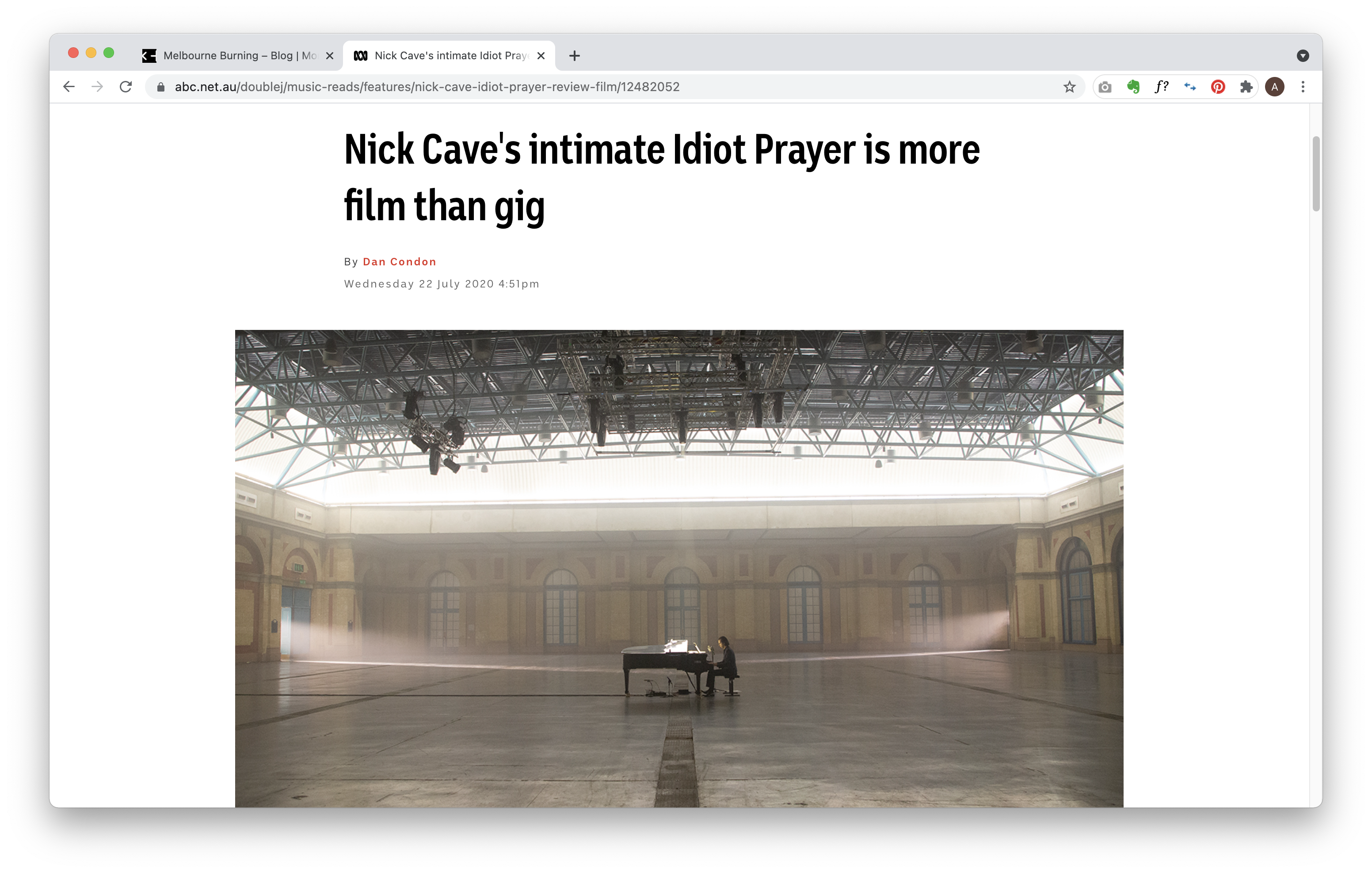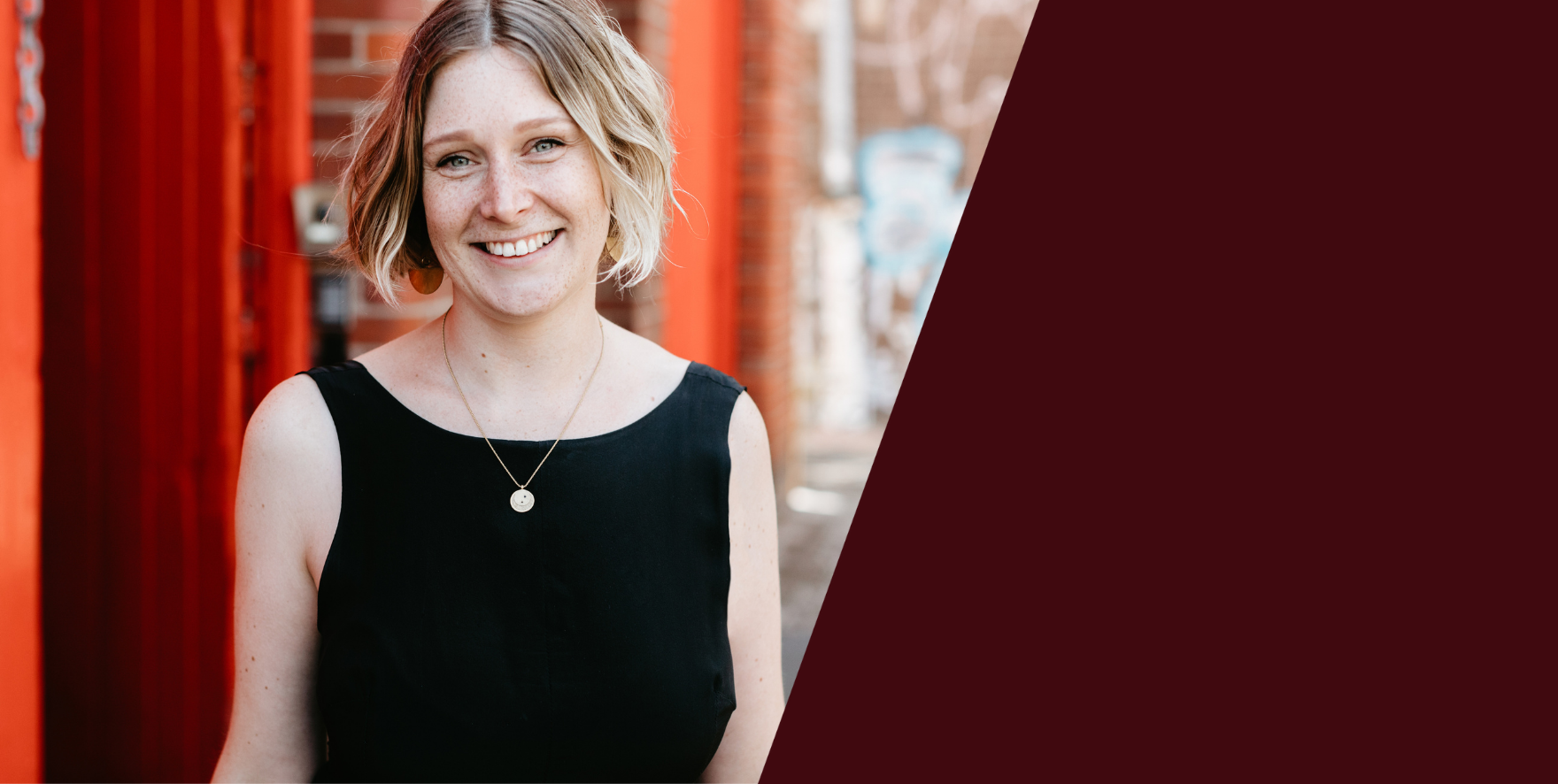I remember listening to a podcast on my way to work. The day was unremarkable—a Tuesday, maybe, in February. I’d been hearing bits and pieces about some virus in China. The story followed a journalist who was one of the last to leave Wuhan before the borders were shut. She spoke about the eerily empty streets of the city, the welded-shut doors that kept people inside, and how utterly bizarre the situation was.
‘That sucks’, I remember thinking. And also: ‘that’d never happen here.’ To be fair, doors haven’t been welded shut, but the virus well and truly spread its proverbial wings and reared its ugly head here in Melbourne.
At the start it was subtle. News of nine cases in Victoria, then eleven, six days later. There were some articles and news stories about COVID-19, but we went about our lives as normal. It was an abstract thing for other people to worry about.
But case numbers went up, and slowly but surely people realised that ‘business as usual’ wasn’t going to cut it. The government released a Pandemic Plan, and stage by stage it was put into action (with many and not always clear revisions).
People panicked and stock-piled, and the shelves at the supermarkets were empty. At home we ran out of toilet paper, but my housemate’s parents very kindly dropped off a few rolls. There was a weird atmosphere in the shops—very man eat man, fend-for-yourself type behaviour. Dan Andrews, the Victorian Premier, put out a statement saying ‘please remember that stockpiling and panic buying hurts the most vulnerable members of our community. And no one needs 96 rolls of toilet paper.’
It was kind of funny, kind of weird, and presumed to be temporary.
When I realised that perhaps things weren’t that temporary after all, when ‘flattening the curve’ and ‘social distancing’ became everyday words, and when working from home had lost its sheen (it was nice when I was by myself, but my two housemates both teach English as second language and I quickly found out how thin the walls in my house really were), I started documenting. More and more it looked like this coronavirus would be something that’d end up in history books, like the Spanish Flu pandemic of a hundred years ago.
And it struck me that while the broader outlines would all be there, I probably wouldn’t remember the conversation I had with a friend about how shitty we felt even though we hadn’t lost our jobs, or how suddenly when told not to touch your face, it’s all you want to do.
I looked at all the things that would get documented properly: press releases, news articles updates on laws and the number of cases; but also screenshots of text messages, snippets from emails and conversations, and posts and stories on Instagram. I ended up with both the big and small, the important and trivial. The big events and the monotony of life in lockdown. A reminder to our (future) selves what our thoughts and feelings were, what came up for us, and how we reacted—both individually and collectively.
The project ended up not being so small after all: a 428-page book capped at a year of COVID-19 (March–March). Here’s a collection of some of the pieces that were included.



